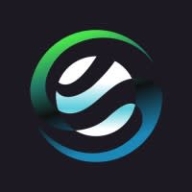


Morphisec and Microsoft Defender for Cloud compete in the cybersecurity solutions category. Morphisec appears to have an edge with its unique approach to in-memory attack prevention, signatureless effectiveness, and seamless integration with Microsoft Defender, offering minimal user interference, whereas Microsoft Defender for Cloud excels in multi-cloud integrations and comprehensive security insights by leveraging its own ecosystem.
Features: Morphisec offers signatureless in-memory attack prevention, low resource consumption for endpoints, and deep integration with Microsoft Defender for streamlined management. It ensures passive end-user involvement, minimizing disruption. Microsoft Defender for Cloud provides robust visibility into multi-cloud environments, regulatory compliance controls, and real-time security insights. It benefits from seamless integration with the Microsoft suite, making it a solid choice for businesses already relying on Microsoft products.
Room for Improvement: Morphisec can improve alert clarity, enhance cloud deployment, and refine reporting to reduce false positives. Microsoft Defender for Cloud faces issues with its user interface, false positives, and could benefit from improved automation of policy implementation and clearer insights. Its complex pricing model and integration challenges with third-party systems are also noted areas for enhancement.
Ease of Deployment and Customer Service: Morphisec supports flexible deployment across cloud environments with responsive technical support, though time zone differences can cause delays. Microsoft Defender for Cloud is also effectively deployable in diverse environments with quick, problem-solving support, although users experience challenges with documentation and guidance.
Pricing and ROI: Morphisec is known for competitive pricing, effective in freeing resources and offering straightforward licensing tied to endpoints. Users often highlight cost savings and reduced workload as key ROI benefits. Microsoft Defender for Cloud features flexible pricing plans that some find costly for smaller businesses. It offers integrated security value as part of the broader Microsoft ecosystem, demonstrating good ROI.
| Product | Market Share (%) |
|---|---|
| SentinelOne Singularity Cloud Security | 2.3% |
| Microsoft Defender for Cloud | 5.2% |
| Morphisec | 0.4% |
| Other | 92.1% |



| Company Size | Count |
|---|---|
| Small Business | 45 |
| Midsize Enterprise | 20 |
| Large Enterprise | 54 |
| Company Size | Count |
|---|---|
| Small Business | 26 |
| Midsize Enterprise | 7 |
| Large Enterprise | 45 |
| Company Size | Count |
|---|---|
| Small Business | 5 |
| Midsize Enterprise | 8 |
| Large Enterprise | 8 |
SentinelOne Singularity Cloud Security offers a streamlined approach to cloud security with intuitive operation and strong integration capabilities for heightened threat detection and remediation efficiency.
Singularity Cloud Security stands out for its real-time detection and response, effectively minimizing detection and remediation timelines. Its automated remediation integrates smoothly with third-party tools enhancing operational efficiency. The comprehensive console ensures visibility and support for forensic investigations. Seamless platform integration and robust support for innovation are notable advantages. Areas for development include improved search functionality, affordability, better firewall capabilities for remote users, stable agents, comprehensive reporting, and efficient third-party integrations. Clarity in the interface, responsive support, and real-time alerting need enhancement, with a call for more automation and customization. Better scalability and cost-effective integration without compromising capabilities are desired.
What are SentinelOne Singularity Cloud Security's standout features?SentinelOne Singularity Cloud Security is deployed in industries needing robust cloud security posture management, endpoint protection, and threat hunting. Utilized frequently across AWS and Azure, it assists in monitoring, threat detection, and maintaining compliance in diverse environments while providing real-time alerts and recommendations for proactive threat management.
Microsoft Defender for Cloud is a comprehensive security solution that provides advanced threat protection for cloud workloads. It offers real-time visibility into the security posture of cloud environments, enabling organizations to quickly identify and respond to potential threats. With its advanced machine learning capabilities, Microsoft Defender for Cloud can detect and block sophisticated attacks, including zero-day exploits and fileless malware.
The solution also provides automated remediation capabilities, allowing security teams to quickly and easily respond to security incidents. With Microsoft Defender for Cloud, organizations can ensure the security and compliance of their cloud workloads, while reducing the burden on their security teams.
Morphisec integrates seamlessly with platforms like Microsoft Defender, offering signatureless protection against zero-day threats and ransomware. It enhances existing endpoint solutions with minimal maintenance through its set-and-forget deployment, providing heightened security and reduced false positives.
Morphisec strengthens defense strategies by merging memory morphing and signatureless protection to effectively block zero-day attacks and ransomware. It operates efficiently within existing infrastructure, reducing system impact and maintenance needs. Users find its full visibility dashboard invaluable. Despite its strengths, cloud deployment and reporting features can be improved. Stability, alerts, and integration with other systems pose challenges for users, impacting usability and support quality.
What are Morphisec's key features?
What benefits should users consider in reviews?
In security-focused industries, Morphisec is crucial for protecting workstations and servers against sophisticated attacks like ransomware. Its signatureless technology offers early threat detection, while compatibility with existing systems ensures seamless integration, providing advanced protection without additional licensing costs.
We monitor all Vulnerability Management reviews to prevent fraudulent reviews and keep review quality high. We do not post reviews by company employees or direct competitors. We validate each review for authenticity via cross-reference with LinkedIn, and personal follow-up with the reviewer when necessary.